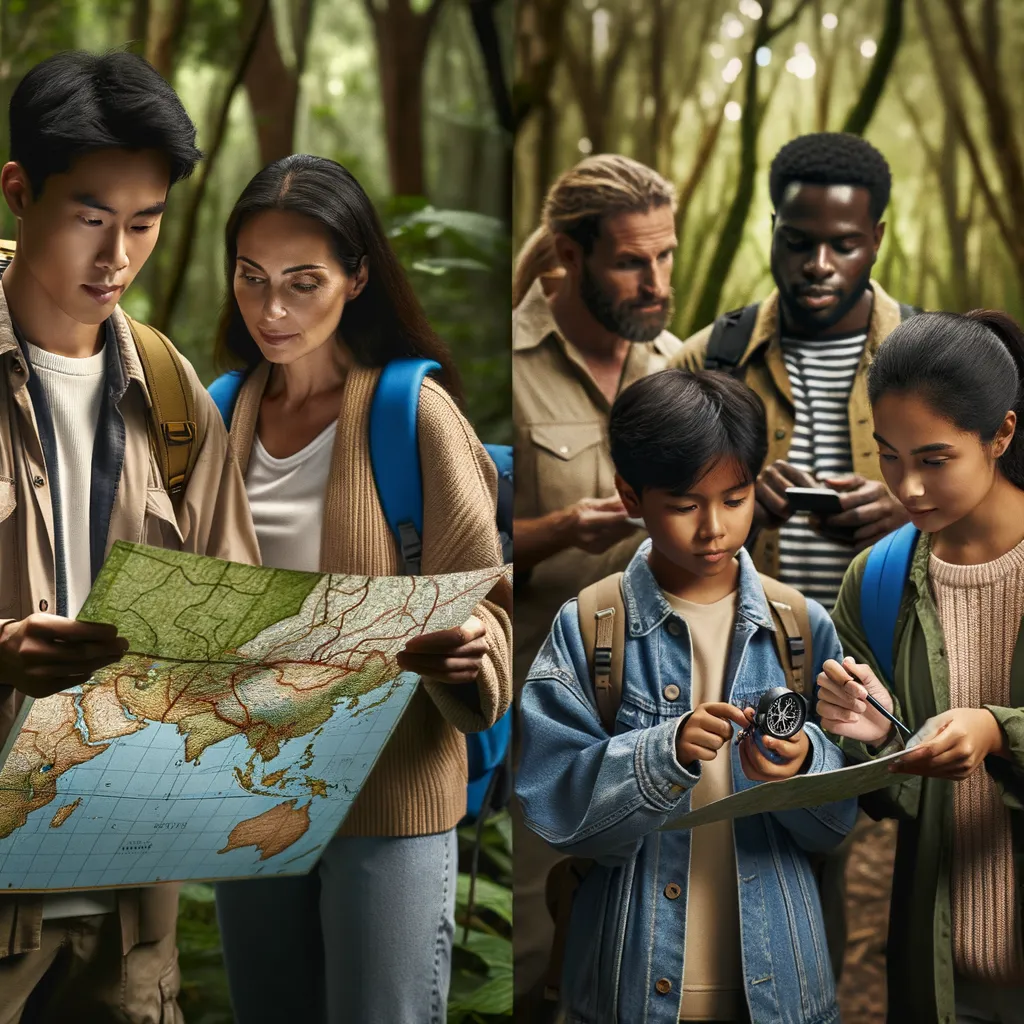Navigating the Wilderness: Mastering Map Reading and Compass Skills for Families
Welcome to our comprehensive guide on Navigating the Wilderness: Mastering Map Reading and Compass Skills for Families! Whether you’re planning a family camping trip, embarking on a hiking adventure, or simply want to teach your kids about outdoor navigation, you’ve come to the right place. In an age where digital devices are omnipresent, the art of map reading and using a compass can seem a bit old school, yet these are invaluable skills for any outdoor enthusiast, especially when venturing into areas where your smartphone’s GPS might not be reliable.
Why Map Reading and Compass Skills Are Essential for Children and Parents Alike
In a world overwhelmingly digital, teaching kids and parents alike the fundamental skills of reading a map and navigating with a compass offers numerous benefits. These skills enhance spatial thinking, improve problem-solving abilities, and foster a deeper connection with the natural environment. Moreover, they serve as an essential safety tool for any outdoor adventure, ensuring families can confidently explore the great outdoors.
Getting Started with Basic Map Reading
- Understanding Map Symbols: Begin by familiarizing yourself and your kids with common map symbols. Maps are peppered with various symbols representing roads, trails, rivers, and other geographical features. Learning what these symbols mean is the first step in mastering map reading.
- Reading the Legend: The map’s legend acts as the key to unlocking its symbols and scale. Spend time reviewing the legend together, discussing what each symbol represents and how different colors depict various types of terrain and features.
- Identifying Landmarks: When outdoors, encourage your children to identify landmarks and find them on the map. This practice helps develop a connection between the physical environment and its two-dimensional representation on the map.
Mastering Compass Use
- Parts of a Compass: Start with teaching the parts of a compass. The baseplate, housing, needle, and orienting lines are crucial for understanding how a compass works. Make it a fun learning experience by exploring each part’s function through hands-on activities.
- Understanding Bearings: Learning to take a bearing and follow it is one of the most practical skills in navigation. Practice this skill in an open area, such as a park, where you can easily set a course and follow it. This will prepare you for more challenging terrain.
Combining Map and Compass Skills
Once you and your children are comfortable with the basics of map reading and compass use, it’s time to combine these skills. Start with simple exercises, like navigating from one point to another in a familiar area, then gradually increase the complexity as your confidence grows. Remember, the goal is not just to reach a destination, but to enjoy the journey and the learning process together.
Embracing these foundational outdoor navigation skills will not only prepare you and your family for exciting adventures but also instill a sense of independence and confidence in your children. Stay tuned for more detailed exercises, advanced navigation techniques, and tips on making the most of your outdoor adventures with map and compass in hand.
As you embark on this journey of discovery and learning, remember, the world is your classroom, and every trail offers a new lesson. Let’s gear up, step out, and embrace the adventure that awaits, confident in our ability to navigate the wilderness together.
https://en.wikipedia.org/wiki/Camping

5 Essential Tips for Parents: Navigating the Wilderness with Map Reading and Compass Skills
Embarking on the journey of mastering map and compass skills as a family not only paves the way for unforgettable adventures but also ensures safety and develops critical thinking among young explorers. As parents prepare to teach these invaluable skills to their children, understanding the fundamentals is key. This guide dives deep into what you need to know for a successful and enjoyable navigation learning experience in the great outdoors.
Tip 1: Start with the Basics at Home
Before stepping foot in the wilderness, it’s imperative to lay the groundwork in a controlled environment. Begin with the very basics of map symbols and compass parts at home. Create engaging activities like scavenger hunts using a simple map of your home or neighborhood to spark interest. This method not only makes learning fun but also builds a strong foundation for map reading and compass skills without the distractions of the actual wilderness.
Tip 2: Choose the Right Equipment
Equip your family with the appropriate tools for navigation. Invest in a durable, user-friendly compass and detailed topographical maps of the area you plan to explore. Lightweight, waterproof maps and compasses designed for beginners are ideal for children. This investment not only enhances the learning experience but also ensures you are well-prepared for any outdoor adventure.
Tip 3: Integrate Technology Wisely
In a digital era, embracing technology can complement traditional map reading and compass skills. Utilize GPS devices and apps as supplementary tools for teaching and exploration. However, it’s crucial to emphasize the importance of not solely relying on digital tools. Educate your children on the limitations of technology, such as signal loss, and the importance of having physical maps and compasses as reliable backups.
Tip 4: Practice Safety and Preparedness
Safety should be the top priority in any outdoor adventure. Teach your children about the significance of staying on marked trails, understanding emergency procedures, and recognizing natural landmarks. As you practice map and compass skills, also educate your family on basic survival skills, such as identifying safe water sources and understanding weather signs. Equipping your children with knowledge and respect for nature’s unpredictability is crucial for any wilderness venture.
Tip 5: Gradually Increase Complexity and Challenge
As your family becomes more comfortable with basic navigation skills, incrementally introduce more challenging scenarios. Start with short hikes using maps and compasses, then gradually venture into longer trails with varying terrains and less visible paths. Incorporating environmental features, such as rivers or elevation changes, into your navigation exercises can offer practical experience in interpreting map symbols and following compass bearings under diverse conditions.
Lastly, it’s essential to foster a sense of adventure and curiosity throughout the learning process. Encourage questions and exploration, allowing your children to take the lead under supervision. Celebrate successes and view mistakes as learning opportunities. This positive reinforcement not only builds confidence but also instills a lifelong passion for the great outdoors and the invaluable skill of navigation.
By integrating these five tips into your preparation, parents can ensure that their family not only gains a solid foundation in map reading and compass skills but also develops a deeper appreciation for the natural world. Remember, navigating the wilderness is about more than reaching a destination; it’s about the journey of discovery, learning, and the special bond formed through shared challenges and achievements. Let these adventures begin with a map, a compass, and an unbeatable spirit of exploration.
Disclaimer
The articles available via our website provide general information only and we strongly urge readers to exercise caution and conduct their own thorough research and fact-checking. The information presented should not be taken as absolute truth, and, to the maximum extent permitted by law, we will not be held liable for any inaccuracies or errors in the content. It is essential for individuals to independently verify and validate the information before making any decisions or taking any actions based on the articles.




